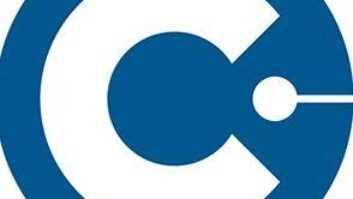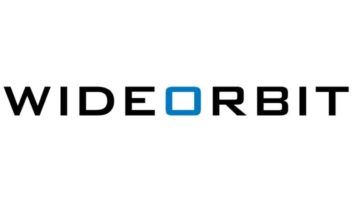The developers of the NextRadio application feel they are out of start-up mode. They believe their efforts to monetize the “hybrid radio” app will take hold in 2017 as more wireless providers activate chips enabling FM tuners in their smartphones to receive local radio signals.
The project appears to be at an important time of transition. To date, NextRadio has been an expense rather than a revenue generator for the radio industry, which has paid millions of dollars to Sprint to help kick-start its rollout. That seminal three-year agreement expires this month, and NextRadio has been in arrears with Sprint; it is working with broadcasters and others to fund its multimillion-dollar obligation. Now it hopes to build a business around ad revenue sharing; it recently secured its first national advertiser.

The NextRadio app shows a Home Depot ad.“WHAT RADIO MUST DO”
The app was developed by TagStation LLC, owned by Emmis Communications, with support from NAB Labs; it combines local FM radio listening with online interactivity. Proponents view it as part of industry efforts to boost terrestrial radio’s reach, to provide users with visual and two-way features, and to add digital platforms for advertisers who desire data attribution.
They believe the ability to target listeners and measure results will spur the technology to break out and make money for the industry.
As part of a spring home and garden radio campaign, big retailer Home Depot committed national ad dollars to NextRadio. Visual ads were displayed with action buttons linking to a Home Depot URL or a mapping feature to find a store. The package was sold in a collaborative effort involving NextRadio staff and industry leaders working with the advertiser and its media planning and buying agency Carat, according to NextRadio President Paul Brenner.Radio stations involved in the buy that served visually synchronous content in the app will receive a portion of the revenue, he said.
While Home Depot is the only client so far to make such a commitment, backers view its investment as a breakthrough that could prompt other advertisers.
Industry observers such as Mark Fratrik, senior vice president at BIA/Kelsey, believe NextRadio eventually will become a critical additional revenue stream for radio broadcasters. “This is what radio must do. They need to open up as many revenue streams as possible, and NextRadio will likely be one of them,” he said.
NextRadio has deals with cell carriers Sprint, AT&T and T-Mobile to activate FM chips in smartphones, though only Sprint receives any payments from NextRadio. Verizon also has started to allow select FM-enabled smartphones. At present the app itself is available only on Android smartphones, with a download available on Google Play.
Emmis also developed and licenses TagStation, a cloud-based software platform that allows a broadcaster to manage album art, metadata and enhanced advertising on various devices. Some 3,000 radio stations are signed up at a fee of $120 per year per station to provide the additional info through TagStation; developers are shooting to reach 4,000 in 2017. Another 7,000 stations utilize it at present to display simple stations logos at no cost.
NextRadio also announced at the NAB Show this spring that it was joining with the Public Radio Satellite System on the new PRSS MetaPub Platform to integrate enhanced visual features for public radio stations via TagStation. Brenner said NPR station activations are underway.
The company says the app has seen steady growth since it officially launched in 2013. Approximately 43 million cellphones have been activated and the app has been downloaded 7.6 million times. Monthly registrations have been averaging about 400,000.
MOMENTUM?
The National Association of Broadcasters believes NextRadio has built some good momentum in a short rollout time.
“As we continue building penetration of FM chips in cellphones and the adoption of the app, revenue should follow,” said Dennis Wharton, NAB executive VP of communications.
“We recognize the importance of broadcasters delivering a consistent user experience to listeners, and in the digital world that includes providing metadata or multimedia content, such as artist and album information, as well as interactive advertising opportunities.”

Paul Brenner speaks at the spring NAB Show. Brenner said the app is close to becoming a smartphone fixture. “We have created a hardware solution for the smartphone business in about half the time it would normally take. We were told up front to expect about six years of effort and we have done it in three.
“To have a significant portion of all carriers on board now is huge. We have been able to accelerate distribution of the product quicker than thought.”
The radio broadcast industry’s promotion of the app and its financial contributions have been critical.
“We’ve gotten most of the support we need from the industry. It’s really ramped up to a place where the network of stations supporting TagStation now covers about 80 percent of this country’s population. We have been able to make everyone consistent in the engagement of the listener,” Brenner said.
He said NextRadio’s ability to draw a paying customer is evidence the efforts are taking hold. “We have the ability to show Home Depot data attribution of how their advertising is working. That message is resonating with other advertisers we are approaching. Our ability to measure engagement with listeners from our 7 million downloads covering every market in this country matches us against any other technology now trying to do the same thing,” Brenner said.
“We can show advertisers demographic data in an exact location and what the engagement level was. Advertising money is being shifted to companies that can show that level of attribution.”
Brenner said the next round of negotiations with Home Depot and other national advertisers will be for a “much larger chunk of money, meaning the broadcasters involved will start seeing some real money in 2017.”
NextRadio recently launched service in Canada and Peru and plans a Mexico rollout soon. Other marketing efforts continue. NextRadio recently did a pilot interactive radio campaign with Aloft Hotels, a Starwood brand, in which listeners were able to interact with a digital companion ad on the app; viewers were able to use the companion ad to book a hotel room or look for an Aloft location.
Separately, it ran an eight-week promotion for a Disney contest called “Fly Away with Demi Lovato.” The app served a digital ad to encourage listeners to register for a contest each time one of her songs played on the station that the NextRadio user was tuned to.
The app has not brought in meaningful income yet, according to an Emmis Communications filing with the U.S. Securities and Exchange Commission earlier this year. “Through Feb. 29, 2016, the NextRadio application had not generated a material amount of revenue,” the filing stated.
NO TASTE OF APPLE JUST YET
NextRadio’s expansion continues on Android devices; it will be loaded on all new Samsung S7 and S7 Edge smartphones released across all carriers beginning in August.
But sometimes its progress is overshadowed by the lack of having industry biggie Apple on board with iOS phone activation, industry watchers said.
The NAB remains optimistic that Apple will eventually jump in with NextRadio on its iPhones. “We need to get Apple on board. FM chips have already been activated by Apple on their nano devices, so doing so on their smartphones should not be a heavy lift,” Wharton said.
Brenner said he has had discussions with Apple but that there is “no open dialogue at this moment.” The company, he said, “is probably less incentivized to do anything that threatens Apple Music and Beats 1 listenership. However, if we continue the success with Android phones, I think we’ll see opportunities develop with Apple in 2017.”
Apple did not reply to a Radio World request for this article. The company has been notoriously tight-lipped about NextRadio and the question of iPhone FM chip activation. Recent speculation in the tech industry that Apple would release its forthcoming iPhone 7 without a headphone jack has gained a lot of media attention; NextRadio uses the headphone cable as an FM antenna to improve reception on smartphones.
NextRadio has faced skepticism at times; consultant Mark Ramsey of Ramsey Media once called consumer enthusiasm for the app “a mirage” and wrote, “If consumers clamored for FM radios built into their gadgets wireless companies would be only too happy to provide them. And they wouldn’t have to be paid to do so, as Sprint is for NextRadio.”
But University of Indianapolis communications instructor Scott Uecker told the Indianapolis Business Journal this year he remains optimistic NextRadio can continue to gain momentum citing the interactive nature of the app as “a very big draw” for people in their teens. (Emmis is based in Indianapolis.)
“Those who say this is just about pushing the radio signal to the cellphone are missing the additional experience that [NextRadio] brings,” Uecker said.
Peter Leitzinger, associate research analyst for SNL Kagan, a division of S&P Global Market Intelligence, sees NextRadio as an emerging technology that just hasn’t busted out yet.
“The wireless carriers have always pushed back a bit because giving away free FM radio cuts into their ability to sell data. But I think people are going to eventually begin look for phones with this feature and it should be a big boost to radio,” Leitzinger said.
Leitzinger, who studies broadcast radio and TV and Internet radio for the research firm, said the app is unique in that it offers older technology embedded in an expensive and powerful smartphone.
“So the traditional challenges of radio will always remain. Reception can be an issue, along with static. That becomes a problem for NextRadio considering the number of streaming options now like Spotify and Pandora. I would think NextRadio’s strength will be in urban markets with lots of signals and early adopters.”
“Advertisers are becoming much more digital-savvy. The data NextRadio can supposedly deliver will be critical to its success. The ability to target advertising to certain people in certain areas is what marketers love,” Leitzinger said.
Gordon Borrell, a digital advertising analyst and CEO of Borrell Associates, said NextRadio’s digital platform has the ability to attribute data which is what advertisers are looking for.
“It’s absolutely vital to the bigger sales because larger advertisers and their agencies require proof of audience more than ever. It’s even important, but perhaps not as vital, with smaller or direct local advertisers. They’ve been conditioned to expect data with every advertising buy,” Borrell said.
The researcher said he thinks NextRadio developers have done a good job of generating excitement about the product and a fair job of getting it into the marketplace.
“The app has a four-star rating [out of a possible five] on the Google Play store, so it has its fans,” Borrell said. “However, more people learned about Pokéman Go in one day than NextRadio could generate in several years, so it’s not quite yet the phenomenon the radio industry had hoped for either.”
COSTS
Activation of FM chips in smartphones has been an important goal for NextRadio. It secured sufficient backing from others in radio to promise Sprint $15 million per year beginning in 2013 over three years and to share revenue with the carrier; Sprint in turn agreed to embed the app in at least 30 million FM-enabled wireless devices on its wireless network over that period. A consortium of radio broadcasters including iHeartMedia, Beasley, CBS Radio, Greater Media, Radio One, Hubbard Radio, Townsquare Media, Bonneville and Entercom Communications has contributed to the payments to Sprint. In all, some 40 radio broadcast groups have paid into the fund, Brenner said.
BEHIND NEXT
The following radio broadcast groups have contributed financially to the NextRadio Sprint payments. Brenner said most paid according to a formula based on their revenues.
ABC/Disney
Alpha Broadcasting LLC
Arbitron/Nielsen
Beasley Broadcast Group
Bonneville International Corp.
Buckley Broadcasting Corp.
Capitol Broadcasting Co. Inc.
CBS Radio
Cherry Creek Radio LLC
Connoisseur Media
Cox Media Group
Crawford Broadcasting Co.
Cumulus Media Holdings Inc.
Delmarva Broadcasting Co.
EMF
Emmis Communications
Entercom
Entravision Communications Corp
Federated Media
Greater Media Inc
Hearst Television Inc
Hubbard Radio LLC
iHeartMedia Inc.
Jerry Lee Radio LLC
Katz
Lincoln Financial Media Co.
Midwest Communications Inc.
NextMedia Group Inc.
Palm Beach Broadcasting License LLC
Press Communications LLC
Qantum Communications Corp
Radio One Inc
Renda Broadcasting Corp.
Salem Communications Corp.
Sarkes Tarzian Inc
Sinclair Telecable Inc
Spanish Broadcasting System
Summitt Media
Townsquare Media LLC
Tyler Media Group
Univision
YMF Media LLC
“This doesn’t include hundreds of medium and small broadcasters who have done barter deals through Westwood One and even more stations that continue to run promotional inventory for NextRadio,” Brenner said. “We’ve had immense support from all corners of the industry.”
According to an Emmis Communications filing with the SEC earlier this year, NextRadio was in arrears with Sprint by $14 million at the end of 2015. It is working with the broadcasters and others, including NAB, to fund the remaining debt.
Brenner said the amount due “is now lower than that” as NextRadio works with broadcasters to make sure they fulfill their obligations. “We have had to get a bit creative [with payments] in the homestretch,” Brenner said. “But it’s being taken care of.” Sprint did receive revenue-share dollars from the Home Depot campaign.
A spokesperson for iHeartMedia who asked not to be named said the company continues to be the top supporter of NextRadio.
“We have been the biggest financial backer [relative to the Sprint payments] of NextRadio and have contributed more financially than our share of the radio industry. Additionally, we have contributed more interactive stations and audience to NextRadio than any other company and have also lobbied on behalf of NextRadio with all major constituencies,” according to the spokesperson.
After the agreement expires in August, Brenner said, “NextRadio will not be paying any cell carriers to activate the chip in smartphones. Instead, the new business model going forward will be a revenue sharing formula” tapping the revenue generated by TagStation, he said.
Brenner said he expects the Sprint relationship will be extended under terms similar to those in place with AT&T and T-Mobile. Those revenue-sharing agreements provide carriers with a portion of the enhanced advertising sales in return for activating FM radio on smartphones or preloading the app.
In 2017, he said, “I think you will see a big ramp-up in the number of cell phones supported in the market, followed by talk of revenue potential and advertiser interest.”
Comment on this or any story to [email protected]. Story text has been updated to add Connoisseur Media to the list in the sidebar.












